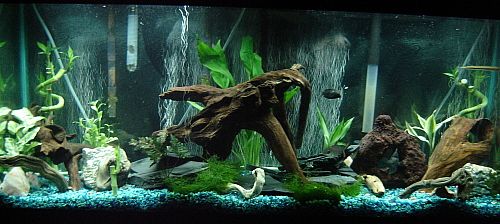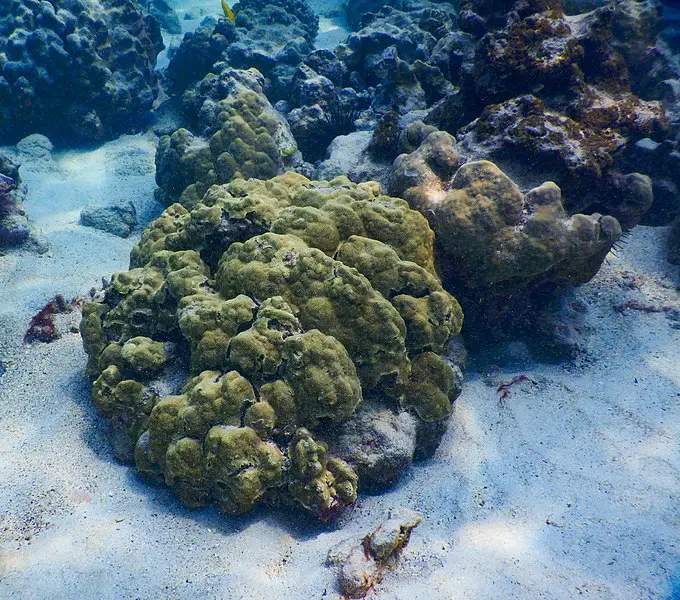Any aquarium owner that keeps cichlids knows how exciting it is to arrange the tank and decorate it to match the unique appearance of the fish. But when it comes to decor, how does driftwood interact with cichlids, and is it safe to keep them in the same tank together?
Generally, it’s not recommended to keep driftwood in your aquarium tank if you also keep cichlids in there. This is due to the tannins that commonly get emitted from driftwoods in water, which alter the water quality, pH level, and alkalinity and can hurt your cichlids.
If you would like to learn more about how driftwood affects fish and cichlids specifically, keep reading. We’ll also highlight different types of driftwood you can use in aquariums, as well as ways to protect your cichlids if you do put driftwood in their tank. Let’s get into it!
Is Driftwood Harmful To Fish?
Driftwood isn’t necessarily harmful to fish; the problem arises when substances called “tannins” leak out of the wood and into the aquarium water. These substances are indirectly harmful to fish since they create the following changes in the tank environment:
- Lowered pH level (greater acidity)
- Lowered alkalinity (softer water)
- More tank disturbances since tannins create dark water that needs to be cleaned more often
As a result, aquarium fish that have strict environmental guidelines to ensure their survival may suffer when you introduce driftwood with tannins into the tank. Some aquarium fish need a very specific pH level to survive or else they’ll experience health issues.
For example, guppies require slightly basic water (above 7.0 pH if possible) and water on the harder side (rich in magnesium and calcium). Other aquarium fish have less strict requirements for living conditions, though, and they should be okay when the water quality changes slightly.
Overall, yes, driftwood can be harmful to aquarium fish if you aren’t aware of how the water alkalinity and acidity are changing. Further, if you don’t quickly act to compensate for those changes, you could have a problem on your hands.
Can Cichlids Have Driftwood In Their Tank?
Cichlids are popular aquarium fish to keep, garnering lifespans of up to 20 years in some cases. When cared for properly, they can live healthy and long lives in well-kept tanks. Cichlids often flock to tank driftwood and can even benefit from the ways that the driftwood balances the ecosystem in the tank.
Keep in mind, though, that if you add decorative driftwood to your aquarium, its leaked tannins could affect the water pH and alkalinity, thus affecting the cichlids.
How To Safely Put Driftwood In Cichlid Tanks
To counteract that tannins in the tank water, you can keep your cichlids in good health by monitoring the pH and water hardness. If they seem off-kilter upon adding driftwood to the tank, you can add appropriate water minerals and acidity changers to meet the following guidelines:
- pH level between 7.8 and 8.6
- Carbonate hardness between 180 ppm and 240 ppm
- General hardness between 160 ppm and 320 ppm
For instance, if the presence of driftwood creates water that’s too soft for the cichlids, you can boost alkalinity by adding water softener pillows, crushed limestone, and other appropriate mineral-rich substances.
Is It Ok To Put Driftwood In An Aquarium?
Before we get into the nitty gritty of different types of driftwoods in aquariums, we should first discuss the use of driftwood in aquariums in general. Luckily, it is safe to use driftwood within home aquariums, and tank owners have been doing so for a long time.
But the type of driftwood you can safely use in any given aquarium depends on the life forms you intend to keep inside, the water consistency, and other factors. By staying aware of these factors, you can avoid issues such as mold formation and harm to your fish, plants, and other aquatic life.
For example, you can’t expect several varieties of driftwood to release tannins into the tank water. This substance darkens the water and can be harmful to certain kinds of aquatic life.
Types Of Aquarium Driftwood And Their Uses
Note that most driftwoods are best when put in a freshwater aquarium tank. It’s not super common to add driftwood to saltwater tanks, although you can if you properly prepare them.
| Driftwood Uses | |
| Sumatran Mangrove Root Driftwood | Freshwater aquariums, large aquariums, the smooth yet gnarled roots give a unique aesthetic within an aquarium |
| Mopani (Mopane Tree) Driftwood | For use in freshwater aquariums, a dense and heavy root that gives a bold centerpiece to an aquarium |
| Cholla (Cactus) Driftwood | A hollow, hole-ey driftwood to give a more artistic look to an aquarium, great for small creatures to explore, great for shrimp tanks since they feed off the wood |
| Spider (Chinese Azalea) Driftwood | A versatile driftwood for aquariums that gives a unique appearance to the tank, best for smaller tanks |
| Pacific Driftwood | A gnarly, tangled driftwood that is versatile enough to go in all different tank sizes |
Do Cichlids Prefer Sand Or Gravel?
Finally, when it comes to the substrate – the materials at the bottom of the tank below the driftwood – cichlids tend to prefer a sandy substrate.
This substrate is a lot less coarse than gravel, which is perfect for the small cichlid that likes to explore and root around on the tank floor and nibble on food droppings.
Best Types Of Sand Substrate For Cichlids
Some of the best types of sand substrate for cichlids include the following:
- Aqua Natural African Cichlid Aragonite Sand
- Caribsea Super Naturals Aquarium Sand
- Caribsea Eco-Complete African Cichlid Sand
- Top Fin Oolite Aragonite Sand
Final Thoughts
Cichlids prefer aquarium tanks that have hard water with a slightly basic pH level and a sandy substrate. Sometimes, adding driftwood to cichlid tanks can disrupt these water qualities due to the tannins that leak from the wood into the water.
If you plan to add driftwood to your cichlid tank, make sure to monitor the pH and alkalinity levels closely so that you can compensate for changes made by the wood.


